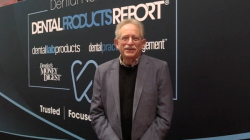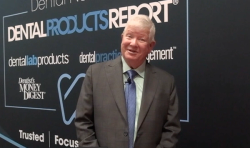- About Us
- Advertise
- Editorial
- Contact Us
- Terms and Conditions
- Privacy Policy
- Do Not Sell My Personal Information
© 2025 MJH Life Sciences™ and Dental Products Report. All rights reserved.
How to: Use single step composite polishers
Manufacturers are developing new composite materials almost every week, yet many of the popular composite polisher formulations have not changed for a decade or more.
Manufacturers are developing new composite materials almost every week, yet many of the popular composite polisher formulations have not changed for a decade or more.
Many of the polishers that were designed to be used on composite materials are no longer available today. Now this is not to say the older polisher formulations are not clinically acceptable, but it is to say that many of these older polishers are not capable of achieving the esthetic results possible with today’s composite materials.
The latest generation composite materials are capable of exceptional results that offer clinicians the ability to create fantastic restorations. When these materials match with polishers that were designed for use on latest generation composites, clinicians can achieve outstanding results with fewer steps in their procedure. This case study shows how Axis Dental’s new UltraGloss and ProGloss composite polishers can reduce chair time and produce excellent results complementing today’s composite materials.
Case report
A male patient presented with a discolored composite restoration on tooth No. 8 (Fig. 1) and wanted to have it replaced for esthetic reasons. A dental exam indicated no caries, and it was determined that the best treatment method would be to replace the existing restoration with a new composite restoration.
Clinical protocols were followed to analyze the patient’s smile, as well as to isolate and prepare the tooth.
01. The original restoration was removed and minimal preparation was performed on the tooth. Using a shoulder preparation bur, the tooth was feather-edged 2 mm beyond the filling preparation (Fig. 2).
02. The prepared area was air abraded with 50 micron aluminum oxide using a DenMat Micro-etcher precision sandblaster to eliminate any contamination by the handpiece. The preparation was then rinsed and dried.
03. A 34% phosphoric acid etch was applied to the preparation for 15 seconds and then rinsed and lightly dried.
04. A thin layer of DENTSPLY Caulk’s Prime & Bond NT was applied to the tooth and air dried for 5 seconds.
05. The preparation was then filled with Cosmedent’s Renamel Nano and sculptured into position with a Thompson Tactile Tone GTX #9 composite instrument. The instrument tips were coated slightly with DENTSPLY’s Prime & Bond to prevent sticking.
06. The composite was cured using a LED curing light for 15 seconds.
07. The composite was given its initial shaping using a 12-fluted, safe end tip, trimming and finishing carbide (Fig. 3).
08. The 12 mm UltraGloss coarse and medium shaping discs, from Axis Dental, were used to recreate the natural anatomical contours of the tooth (Fig. 4).
09. Axis Dental’s ProGloss Single Step composite polisher was used to create a high gloss shine on the restoration (Fig. 5).
10. The completed composite was given a final curing with the curing light, as per the manufacturer’s specifications. The patient’s new restoration delivered the desired esthetics (Fig. 6).
Closing thought
The availability of composite shaping and polishing systems, which are designed to optimize the performance of today’s composite materials, has greatly reduced the number of steps necessary to achieve excellent results. Advanced disc systems, such as UltraGloss, allow for rapid creation of natural anatomy and seamless margins. Single step composite polishers like ProGloss allow clinicians to adjust, pre-polish and create a high gloss shine in just one step. These time-saving products, when used with the latest generation composite materials, reduce valuable chair time and provide patient-pleasing esthetics.
Otice Z. Helmer, DDS, MAGD, of Fort Worth, Texas received his DDS degree from the Baylor College of Dentistry in 1970. He is active in the ADA and Texas Dental Associations; serving on many committees of the AGD and is a 2009 Master member and past Fort Worth AGD - President.



